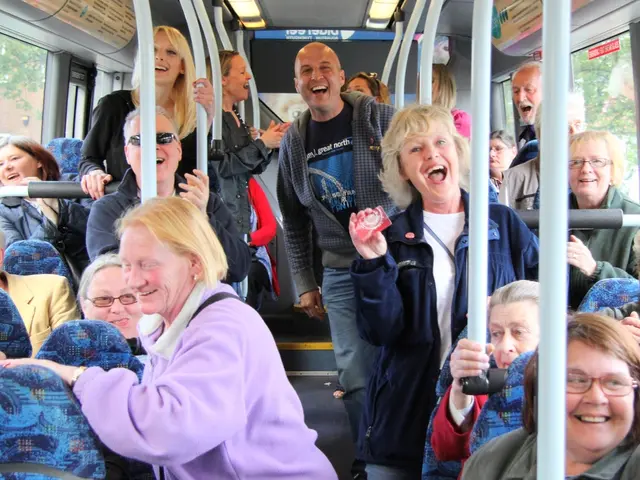Breaking the Silence: Autism in Women and Adults
"Diagnosis of autism in adults: why recognizing the signs matter as much as identifying a malfunctioning appliance"
Hear this loud and clear: autism knows no gender boundaries! According to recent statistics, autism affects one out of every 100 children in Russia, with the "Bare Hearts" foundation's new campaign shedding light on this. However, a closer look at the data reveals some startling trends. In the United States, for instance, ASD is registered in one out of every 31 children, with boys being affected nearly three times more than girls. But what about the women and girls who often go undiagnosed?
Over the past decade and a half, there has been a marked increase in autism diagnoses among women worldwide. Previously, autism was often regarded as a "male diagnosis," with professionals knowing far less about its presentation in girls and women. It's no surprise, then, that the average age of diagnosis for girls is 13 years, a stark difference from boys diagnosed at eight years old.
The "masquerading" of autistic girls' symptoms as mere shyness or introversion has long baffled researchers and clinicians. Many girls have learned to camouflage their symptoms to blend in with their peers, making diagnosis more challenging. Similarly, societal expectations of "problematic" behavior in teenage and adult men have often overshadowed the struggles faced by autistic women.
Artem, who was diagnosed with autism at 37, recalls the feeling of disbelief and a mix of shock and relief when he finally received his diagnosis. "I stopped being 'not normal' and became 'this way'," he shares. Similarly, increasing numbers of women are finding themselves in the same shoes, navigating their way through life with a newly found understanding of their neurodivergence.
Modern diagnostic frameworks, improved awareness, gender-specific presentations, reduced stigma, and heightened understanding of co-occurring conditions have all played a role in this shift. As the world accepts and understands autism better, more women are given the chance to embrace their unique perspectives and not just survive but thrive.
The road to diagnosis is still a complex one, particularly for adults in Russia, where the classification used still refers to "childhood autism." Many doctors tend to offer alternative diagnoses. Moreover, limited access to specialized diagnostic tools and poorly established diagnostic criteria make the process even more challenging.
A diagnosis can be a transformative experience for many adults with autism. As Anton, who received his diagnosis in adulthood, puts it, "A diagnosis helps you understand something about your perception of the world and your reactions to it." With this newfound understanding, individuals can work towards adapting, setting boundaries, and finding comfortable ways to engage with the world.
Nevertheless, there's a long way to go. As Anton shares, "Neurotypical people don't mirror neurons for my problems, our internal experiences are too different." Support and advocacy are crucial in ensuring that autistic individuals live their lives with dignity and quality. It's high time we shift our focus from diagnosis to support, empowering autistic individuals to live their best lives in their own unique ways.
[Related Article: Modern Methods of Diagnosing Autism in Adults][Related Article: How a Diagnosis Helps Adults Accept Themselves][Related Material: Everyday Challenges][Related Material: Strategies for Supporting Adults with Autism]
In 2025, the likelihood of maintaining the trend of increased autism diagnoses among women may be high, as science and medical advancements continue to shed light on mental health and chronic diseases like autism. The use of questionnaires and improved diagnostic frameworks can help in early detection, especially for women who often go undiagnosed due to masking their symptoms. By reducing stigma and increasing awareness, the health and wellness of adults with autism can be significantly improved, providing them with better chances to thrive rather than just survive. Despite progress, challenges remain in certain regions like Russia, where adult diagnosis is complex and access to specialized tools is limited. Advocacy and support are crucial to improve the lives of autistic individuals, focusing not only on diagnosis but also on their overall well-being and quality of life.








